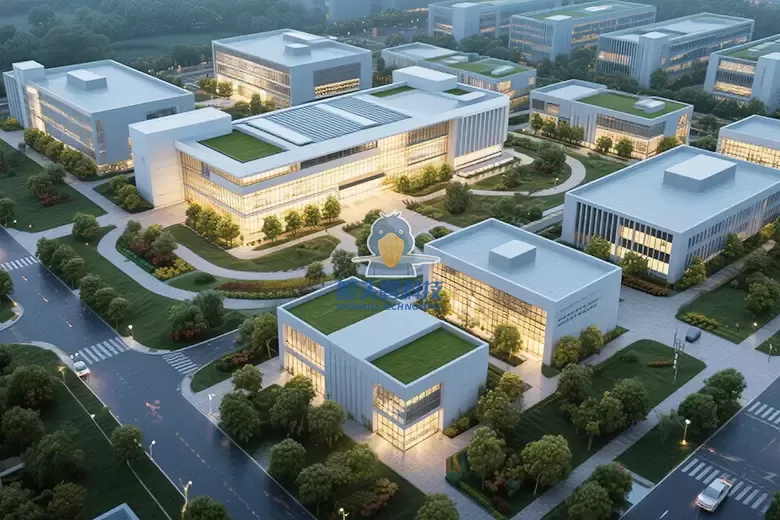In today' s competitive industrial environment, manufacturing factory layout design plays a crucial role in determining operational efficiency, production quality, and overall profitability. A well-planned layout not only ensures smooth material flow but also reduces waste, minimizes downtime, and improves worker safety. In this blog post, Shoebill Technology, a professional plant layout design service provider, will share the key objectives, types and principles of manufacturing factory layout design, as well as practical considerations for different manufacturing scenarios.
1. Understanding Manufacturing Factory Layout Design
Manufacturing factory layout design refers to the strategic arrangement of machines, equipment, workstations, storage areas, and support facilities within a manufacturing plant. The primary objective is to optimize workflow and resource utilization while ensuring flexibility for future changes.
A layout is more than just a floor plan - it is a blueprint for productivity. The design process involves analyzing product requirements, production processes, and operational constraints to create an environment where every movement of material, machine, and worker adds value to the final product.
2. Key Objectives of Factory Layout Design
When developing a factory layout, engineers and managers focus on achieving several core objectives:
* Efficient Material Flow: Minimizing unnecessary transportation, backtracking, or congestion.
* Space Utilization: Making the best use of available floor space while leaving room for maintenance and expansion.
* Operational Safety: Ensuring safe pathways for workers and equipment, along with compliance with occupational safety standards.
* Cost Reduction: Reducing handling costs, operational delays, and inventory holding expenses.
* Flexibility: Allowing for quick adaptation to new products, technologies, or production volumes.
3. Common Types of Manufacturing Factory Layout Design
Selecting the right layout type is critical for matching operational needs with business goals. The main types include:
* Product (Line) Layout
Designed for high-volume, repetitive production, this layout arranges machines and workstations in sequence according to the steps of the production process. It is commonly used in assembly lines, such as automotive manufacturing.
Advantages: High efficiency, low work-in-progress inventory, consistent output.
Disadvantages: Low flexibility, vulnerable to process disruptions.
* Process (Functional) Layout
Machines and equipment performing similar functions are grouped together. This approach is ideal for custom or low-volume production with varied processes.
Advantages: Flexibility to handle a variety of products, better equipment utilization.
Disadvantages: Longer material travel, more handling, and potential congestion.
* Fixed-Position Layout
The product remains stationary, and workers, materials, and equipment are brought to it. This layout is common in shipbuilding, aircraft assembly, and large construction projects.
Advantages: Ideal for large, complex products; minimizes movement of heavy items.
Disadvantages: High transportation cost for tools and parts, coordination challenges.
* Cellular Layout
Workstations are arranged into self-contained cells dedicated to producing a family of similar products. This is widely used in lean manufacturing environments.
Advantages: Short lead times, reduced setup, improved quality control.
Disadvantages: Requires careful planning and investment in training.

4. Principles for Effective Factory Layout Design
A successful manufacturing factory layout design should be guided by the following principles:
* Simplicity: The flow of materials should be straightforward and logical.
* Integration: All departments should be harmoniously linked to facilitate coordination.
* Flexibility: Layout should accommodate future changes without major disruptions.
* Safety and Comfort: Adequate lighting, ventilation, and ergonomic workstations enhance employee well-being.
* Visibility: Supervisors should have a clear line of sight to monitor operations effectively.
* Minimum Handling: Each movement of materials should add value or be eliminated.
5. Steps in the Layout Design Process
Designing an optimal factory layout requires systematic planning:
* Data Collection: Gather details on product specifications, process sequences, equipment dimensions, and material handling needs.
* Process Mapping: Create a process flow diagram to visualize operations and identify bottlenecks.
* Space Requirements: Calculate the floor space needed for machinery, storage, utilities, and pathways.
* Layout Planning: Develop alternative arrangements using block diagrams or computer-aided design (CAD) software.
* Evaluation and Selection: Assess each layout option based on cost, efficiency, safety, and scalability.
* Implementation: Install equipment and arrange workstations according to the selected plan.
* Review and Optimization: Monitor performance and make adjustments as necessary.
6. Technology' s Role in Modern Factory Layout Design
Advances in digital tools have revolutionized layout planning:
* CAD Software: Enables precise visualization and modification of layouts before implementation.
* Simulation Modeling: Predicts production performance under different configurations.
* IoT Integration: Provides real-time data to optimize space and equipment usage.
* Automation and Robotics: Redefine space requirements and workflow patterns, enabling higher productivity.
7. Safety and Compliance Considerations
An effective manufacturing factory layout design must adhere to regulatory standards such as OSHA (Occupational Safety and Health Administration) in the United States or ISO standards internationally. Key safety considerations include:
* Adequate emergency exits and evacuation routes.
* Clear marking of hazardous zones.
* Sufficient spacing for forklift and pallet jack operations.
* Proper ventilation for areas with dust, fumes, or heat.
* Compliance with fire safety and electrical codes.
8. Cost-Benefit Analysis of Layout Improvements
While redesigning a factory layout requires investment in planning, equipment relocation, and potential downtime, the benefits often outweigh the costs. Companies may achieve:
* Increased Throughput: Faster cycle times due to streamlined workflows.
* Lower Operational Costs: Reduced material handling and inventory requirements.
* Enhanced Quality: Fewer handling steps reduce the risk of product damage.
* Employee Satisfaction: Improved working conditions lead to higher morale and productivity.
9. Real-World Example: Automotive Assembly Plant
An automotive manufacturer faced frequent delays due to material congestion and inefficient machine placement. By redesigning the plant into a product layout, they reduced material travel by 40%, increased output by 25%, and improved on-time delivery performance. The initial redesign investment was recovered within 18 months through operational savings.
Conclusion
Effective manufacturing factory layout design is a strategic investment that drives efficiency, safety, and profitability. By aligning layout decisions with production goals, integrating modern technologies, and adhering to safety standards, manufacturers can create environments that not only meet current demands but also adapt to future challenges. In an era where time, cost, and quality define success, the factory floor' s design can be the silent engine powering industrial growth.










